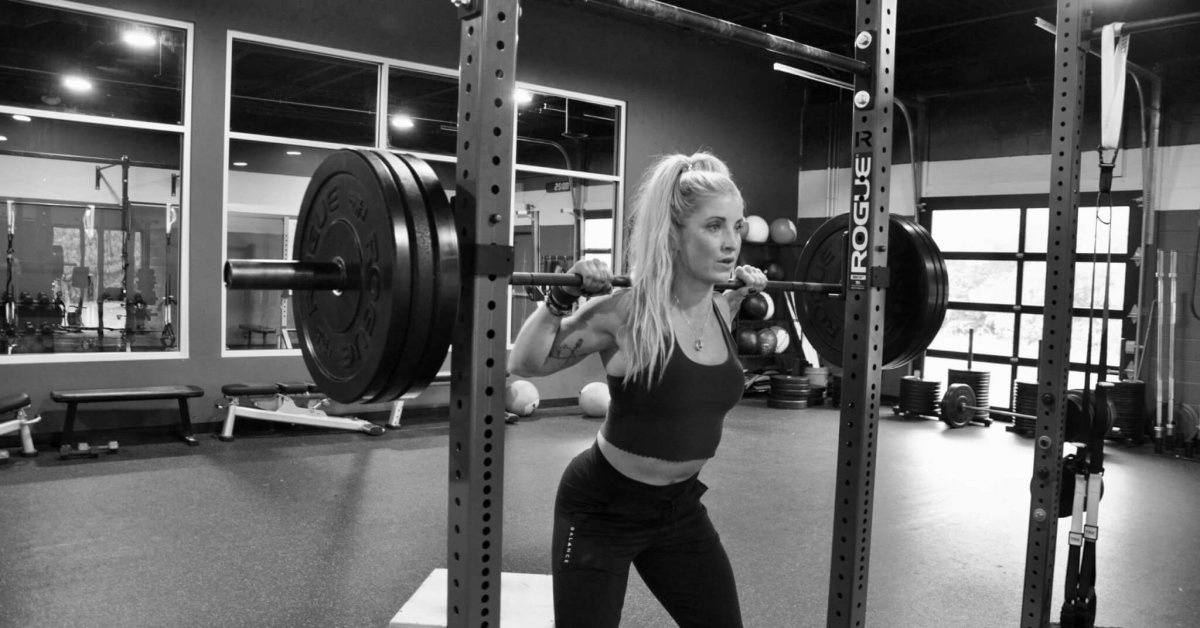The topic of whether or not it is prudent to perform strength and conditioning in the same session is often debated. I will preface this article by saying the optimal scenario would be for athletes to separate sessions that each have one specific focus.
For many, though this may not be possible – so the question is what is the cost of performing both strength and a conditioning piece in the same session?
In this article, I hope to delve into why it is possible, especially in a group setting, to use both strength and conditioning; however, there are some concrete rules that we want to discuss first.
I’ll also tell you specifically how I program this work to ensure that both qualities do not interfere with the other.
A Quick Personal Story
Last year I trained at a commercial gym doing only strength and hypertrophy. I did not have access to sleds or any specialty equipment, but I was still using the Conjugate Method, so there was still a consistent rotation of variations.
The goal was to change things up and just focus on getting stronger, improving imbalance, and body composition. The end result was cracking several plateaus, namely in the back squat, front squat and bench press.
I was happy with the results and how my body felt, but I was bored with the process. I missed conditioning and GPP work was ready to change things up.
The reason being most personality types (like myself) that are drawn to CrossFit love novelty. They love new and exciting things. Doing the same ol’ thing day in and day out gets old. Fast. Even with an approach like the Conjugate Method, I was still bored.
Having variety is fun. Having variety keeps you entertained where you always have areas of your fitness that need attention. In short, it was great to crack plateaus, but at the end of the day, I’d rather have fun while still getting better, albeit on a longer timeline.
What Is Strength and Conditioning Work?
We know by definition strength is the ability of a muscle or muscle group to generate force, but specifically what we are referring to is work that is done to improve inter/intra-muscular coordination (max effort work).
Within this same realm is our work that improves our athlete’s ability to enhance the rate of force development (RFD) too (dynamic effort work). Both ME & DE work rely heavily on the Anaerobic ATP-PC system.
On the other hand, our accessory work is instrumental in improving our strength work, as bringing up one’s limiting factors is highly responsible for assisting in longevity and performance, but this work is commonly used in a rep-schemes that facilitate hypertrophy (muscle-growth) more than maximal strength with longer sets/higher amounts of time the muscle is under tension.
Our conditioning work seeks to improve our athlete’s ability to perform higher levels of work-output across all three energy systems. Our focus here is improving aerobic, glycolytic, and ATP-PC systems, but if we’re being honest anaerobic systems have far less room for development and largely based on genetics.
Sounds like two entirely different things when compared to strength work, right? Yes and no.
Let’s separate our training into categories so we can delve into our logic here and how things fit together with our system of concurrent programming.
Clearly, there are a lot of parallels, as well as some distinct differences among modalities. So let’s talk in terms of certainties that we can take to the bank:
- Aerobic Work will ALWAYS be separated from Strength work. The two modalities are too different to combine and strength work can take away from aerobic work. This is non-negotiable.
- Max Effort or Dynamic Work can potentiate higher-threshold work (anaerobic work) if movement sequencing is done correctly. And this work satisfies the goal of being able to try the ATP-PC system as MOST of this work is less than 10 seconds and high-effort relying on high-energy phosphates as fuel. For example, if you perform a 2RM Deadlift and then perform a high-threshold conditioning piece with heavy deadlifts, it’s likely there will be high-levels of interference, as the deadlift is the most demanding movement in our arsenal. On the other hand, if you were to sequence a 1RM Front Squat and then perform moderate to heavy deadlifts on your higher-threshold conditioning work, the chance of interference is much lower and the front squat can actually potentiate the sympathetic nervous system for your conditioning without pre-fatiguing the same musculature. The combination is knee-dominant vs. hip-dominant is much more favorable in this case.
- Sequencing and volume of compound movements must be taken into consideration. This is another reason why I’m a huge fan of 1-Rep maxes and Dynamic Effort work in the group setting, as the intent is clear and both combine easily with conditioning work. Higher-rep maxes will drastically impair your athletes’ ability to perform subsequent conditioning work. Keep intensity high with max effort work, but volume low.
- Accessory work will be separated (more times than not) from conditioning. Of course, some of our conditioning pieces may include unilateral movements that can double as accessory work, but what we are referring to is work that is done to compliment our training session for the day, usually done as straight sets.
- GPP Work can be used to satisfy multiple goals, but the key here is that the demand is low due to significantly lower external loading and less skill required. This work can also facilitate recovery done after strength work as a “finisher”.
- Single Modality Days are crucial. Having a single element day has a number of advantages, but outside of the physiological benefits, the psychological benefits of mixing things up and giving your athletes a “break” from time to time are important.
Bringing it all together
Our goal is to help athletes become better versions of themselves in terms of fitness, longevity, and body composition, so well-rounded concurrent fitness is the best course of action.
Of course, we know dedicated work to improve one modality in a given session may be optimal, but that’s not to say that we cannot use “strength-work” to prime our nervous system and potentiate our conditioning work, we certainly can.
Will your fitness decline from this method? In 15 years of I’ve yet to see that happen, but there are ALWAYS exceptions.
What if you’re trying to compete in Olympic lifting or an endurance event? Then having an individual plan to focus on YOUR needs/goals will always be optimal then random workouts.
SaveSave
SaveSaveSaveSave
SaveSave



